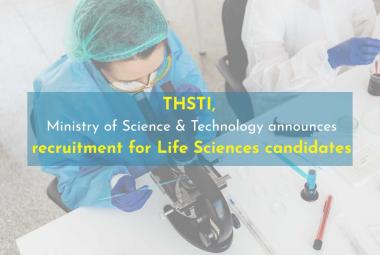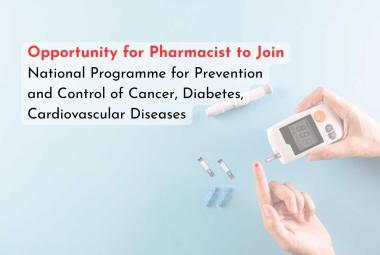ABOUT AUTHOR:
Akshay Rajgaria
Kanak Manjari Institute of Pharmaceutical Sciences
Rourkela, Orissa
akshaykrish2007@gmail.com
ABSTRACT:
Andropause is an age-related decline of testosterone in men that is gaining recognition as the world population becomes more aged. The diagnosis is based on clinical signs and symptoms supported with laboratory confirmation of low serum testosterone levels. The benefit of testosterone replacement therapy (TRT) for andropause has been well documented, but it requires careful monitoring.
REFERENCE ID: PHARMATUTOR-ART-2007
INTRODUCTION:
Andropause or male menopause, sometimes colloquially called "man-opause", is a name that has been given, in some parts of the English-speaking world, to a set of effects that appears in some aging men, and which have some superficial similarities to menopause effects in women. Andropause may be related to the slow but steady reduction of the production of the hormones testosterone and dehydroepiandrosterone in middle-aged men, and the consequences of that reduction. It is also associated with a decrease in Leydig cells. A steady decline in testosterone levels with age (in both men and women) is well documented. Unlike "menopause", the word "andropause" is currently not recognized by the World Health Organization and its ICD-10 medical classification. While the words are sometimes used interchangeably, hypogonadism is a deficiency state in which the hormone testosterone goes below the normal range for even an aging male.
OCCURRENCE: Andropause is fairly common, and chances of getting it increase the older you get. At 40-49 years of age, about 2% to 5% of men have it. From 50-59 it jumps to anywhere from 6% to 40% of the population.
PATHOPHYSIOLOGY:
The production of testosterone in men is controlled by the HPG axis. Gonadotropin-releasing hormone (GnRH) is secreted from the hypothalamus and stimulates the pituitary gland to release luteinizing hormone (LH), which, in turn, acts on testicular Leydig’s cells to produce testosterone.5,6 Testosterone is metabolized by 5-alpha-reductase enzyme to dihydrotestosterone (DHT) in the prostate, and then metabolized to estradiol by the enzyme aromatase.
Testosterone is bound (80%) to sex hormone-binding globulin (SHBG) and, to a lesser extent, to other serum proteins, such as albumin. It is estimated that 2% of testosterone exists free in the serum. The non–SHBG-bound form of testosterone, along with free testosterone, constitutes the biologically active fraction of testosterone.
The HPG axis is complex and interacts with a number of other endocrine systems, whose production of hormones is also affected by aging. Of these other hormones affected by aging, the most important are the weak androgenic hormones (i.e., dehydroepiandrosterone and its sulfate) released from the adrenal gland. These hormones decline with aging.
The pineal hormone melatonin also is elaborated in reducing amounts with aging. A reduction in the serum levels of melatonin is responsible for the disturbances of sleep and biorhythms associated with aging.2 these phenomena are attributed to some extent to the declining levels of serum testosterone with aging. The levels of growth hormone also decline with aging, leading to a decline in muscle mass and strength—again, the features seen in those with hypoandrogenism.4 The levels of estrogens and corticosteroids in men do not show significant alterations with aging. Recently, it has been found that a hormone produced by adiposities, leptin, may act in conjunction with androgens in maintaining a lean body mass.
Reduction in total testosterone is seen in men only in the sixth decade of life. Reduction of free testosterone levels occurs earlier (1% decline per year between ages 40 and 70 years).5,6 This reduction is due to the increasing SHBG concentrations at a rate of 1.2% per year. The free fraction of testosterone decreases in proportion to the increase in the number of testosterone-binding sites on SHBG. With aging, there is also a reduction in Leydig’s cell function and HPG axis sensitivity. About 7% of men between 40 and 60 years of age, 20% of those between 60 and 80 years of age, and 35% over 80 years have total concentrations below the low normal level of 350 ng/dL. This decline is gradual (compared to the rapid hormone decline in women during menopause). The effects of andropause are less dramatic in men as compared with the effects of menopause in women.
ANDROPAUSE SYMPTOM:
- Diminished sexual desire and erectile quality. In particular, a decrease in nocturnal erections is a significant sign of decreased androgens with a decrease in intellectual activity, fatigue, depression, anger, and poor spatial orientation.
- Mood changes. This sometimes comes with a loss of intellectual activity, fatigue, depression, anger, and poor spatial orientation.
- Lean body mass reduces along with muscle mass and strength.
- A loss of body hair.
- Bone density decreases resulting in osteoporosis. Osteoporosis can lead to the occurrence of bone fractures and breaks.
- An increase in fat around internal organs.
- Sleep apnea.
- Memory loss.
- Hot Flashes.
- Depression.
- Night Sweats in Men.
- Gynecomastia (male breasts).
Gynecomastia (male breasts).
Men's symptoms appear over the course of a decade or more and it becomes a very slow, insidious process that they attribute to getting old. Beyond undesirable symptoms, studies show that the decline of testosterone in andropause may put men at risk for heart disease and bone loss. Symptoms of andropause are also associated with stress levels, nutrition quality, fitness routine and the environmental toxins the body is exposed to on a daily basis.
OTHER FACTORS CONTRIBUTING TO SYMPTOMS OF ANDROPAUSE:
Factors such as smoking, obesity, alcohol use, lifestyle patterns, and various disease states accentuate the testosterone decline. Symptoms and signs of andropause may be due to some extent to these associated conditions. The actual relationship, however, is not completely known at present.
Smoking increases total serum testosterone levels. Obesity correlates with total testosterone levels. Obese men have reduced total testosterone and SHBG levels (63% lower in very obese and 25% lower in mildly obese). Decline in the free testosterone level is less prominent. Alcohol results in a 19-27% reduction in testosterone levels.
Further, older men have less circadian variation in testosterone than younger men. Thus, a fall in the morning levels is more prominent. Note that poor health and chronic disease do not affect the rate of reduction in free testosterone.
CAUSES OF ANDROPAUSE:
Injury, medication, surgery, stress, alcohol and a diet rich in fat. They all add up and affect production of both testosterone and the often intertwined growth hormone.Another culprit behind andropause, particularly if the decline in hormone production starts in a man’s thirties, is sex hormone binding globulin (SHBG), which prevents testosterone from being used. And with less testosterone being produced to begin with, the results are vast and far-reaching.Diabetes and several diseases also play a role in decline in hormone production.
ROLE OF TESTOSTERONE IN ANDROPAUSE:
Testosterone is a male sex hormone (androgen) produced by the testes and adrenal glands. Testosterone builds protein, regulates metabolic function, produces red blood cells in bone marrow, assists with liver function and moderates growth of the prostate gland. Each of these functions is essential to the body, especially as we age. And it comes as no surprise then, that decreasing levels of testosterone are associated with flab, loss of muscle tone and osteoporosis.Notably, loss of testosterone is linked to metabolic syndrome – a collection of risk factors, including high blood pressure, high cholesterol levels and increased Body Mass Index (BMI). All of which increase risk of heart disease.
DECLINE IN GROWTH HORMONE:
Testosterone’s an important factor to a man’s health and quality of life. But so is growth hormone, a 191 amino acid protein-based peptide hormone responsible for cell growth and regeneration. Admittedly growth hormone doesn’t get the same attention paid to testosterone. That’s unfortunate, because it’s just as important. Growth hormone governs your height, bone density, muscle tone, hair color (and condition), skin and your sex drive, among other things. Growth hormone overlaps in many of the same functions as testosterone and men tend to experience a similar rate of loss accordingly. Production of growth hormone peaks in the mid-twenties and declines there after, at roughly one percent a year beginning at 30. There’s nothing uncommon about a 70 year old man with less than half the growth hormone he had at 25.We should also clarify that, contrary to popular belief, HGH and growth hormone are not the same. Growth hormone is what you produce naturally. HGH is synthetic growth hormone, of which somatropin is a well-known example.
TREATMENT:
Treatment with testosterone replacement therapy (TRT) is reserved for men with symptoms of andropause (as discussed earlier) and low serum testosterone levels in the absence of contraindications, such as men with carcinoma of the breast, known/suspected carcinoma of the prostate, severe benign prostatic hypertrophy (BPH)-related bladder outlet obstruction, and liver dysfunction.7 The administration of exogenous testosterone is not a means of reversing the aging process in men with normal (eugonadal) serum testosterone levels, but it may offer considerable benefit for men suffering from symptoms of andropause with documented low serum hormone levels.7 Although testosterone has been associated with beneficial effects, such as improvement of muscle mass, memory, depressive symptoms, sexual performance, sex drive, function of immune system, and serum lipid profile, therapy is not indicated if the physical and/or psychological symptoms (eg, diminished libido, gynecomastia, impaired masculinization, changes in body composition, and osteoporosis) are not associated with low serum testosterone levels, as the symptoms may be secondary to other disorders.
Testosterone secretion in healthy young men typically exhibits a circadian variation with maximum concentrations achieved at approximately 8:00 am and minimum concentrations achieved at approximately 10:00 pm, with a range of 10.4-36.4 nmol/L (350-1050 ng/dL). These concentrations decrease with age and are associated with a loss of circadian rhythm. Subnormal serum testosterone concentrations occur as a consequence of testicular disease (primary hypogonadism), hypothalamic-pituitary disease (secondary hypogonadism), or as a result of aging (andropause). Low serum testosterone levels in aging men result in symptoms of andropause, including physical, sexual, and emotional symptoms, decreased libido, and loss of muscle and bone mass.
Testosterone replacement should approximate natural, endogenous production of the hormone. The clinical rationale for treatment of testosterone deficiency includes stabilization/increase of bone density, enhancement of body composition by increasing muscle strength and reducing adipose tissue, improvement of energy and mood, and maintenance/restoration of libido and erectile function.
Baseline assessment before testosterone replacement therapy
Evaluation of potential candidates for TRT should include a complete medical history and hormonal screening. Total serum testosterone should be measured in the morning. When the serum testosterone level is low and LH is elevated, TRT is warranted. Patients with low serum LH and testosterone levels need an imaging study of their pituitary gland and may need endocrinologic consultation.
Baseline assessment includes transrectal ultrasound (TRUS), digital rectal examination (DRE), and measurements of total and free prostate-specific antigen (PSA). Serum PSA should be measured annually while the individual is on TRT, even though the sensitivity of serum PSA measurement in the presence of low testosterone levels is questioned. One study has reported a 14% incidence of adenocarcinoma by TRUS-guided needle biopsy of the prostate in men (with low PSA and normal DRE) on TRT.8 At present, the role of TRUS and TRUS-guided prostatic biopsy in men on TRT is not completely known.
Administration of testosterone replacement therapy
Most of the clinical trials in TRT in andropause are not adequately powered to assess potential risks, such as the need for invasive therapy of BPH, development of a clinical prostate cancer, or cardiovascular events. Thus, the benefit/risk ratio of TRT in aging men is not known.
Due to rapid hepatic catabolism after oral ingestion, replacement of native testosterone is ineffective. Oral testosterone is associated with elevations in liver function tests and abnormalities at liver scan and biopsy. Although injectable testosterone is considered safe, fluctuations in testosterone levels may yield variations in libido, sexual function, energy, and mood, and patients may be inconvenienced by the need for frequent testosterone injections. Transdermal systems offer a convenient, though more costly, means of testosterone replacement and have demonstrated safety and efficacy in a number of clinical trials.
Newer forms of administration, such as patches and gels, are generally well tolerated, except for skin irritation. The possibility that skin transfer may occur with gel use can be prevented by showering or wearing protective clothing. Testosterone undecanoate (administered orally) is available in Europe and Asia, and is not associated with hepatotoxicity, but shows large intra- and intersubject absorption variation, depending on food intake.
A new sustained- and controlled-release Testosterone Buccal system (TBS) contains testosterone 30 mg and mucoadhesive excipients. Because venous drainage from the oral cavity flows directly to the superior vena cava, transbuccal delivery of testosterone substantially circumvents hepatic first-pass catabolism. Buccal administration, therefore, is a rational method of hormone delivery. The TBS was designed to rapidly adhere to the buccal mucosa and slowly form a gel. As the tablet hydrates, the hormone is released and absorbed across the buccal mucosa.
Symptomatic andropause is controlled by testosterone supplementation. Testosterone can be administered in oral, parenteral, or transdermal forms (Table). The parenteral salts (enanthate and cypionate esters) are safe, effective, and relatively inexpensive and can be given in a dose of 200-300 mg every 2-3 weeks. The often-observed drawback of parenteral administration is high serum levels during the first week of treatment followed by a rapid decline. Undecanoate of testosterone is expensive and has to be taken with fatty meals for lymphatic absorption to avoid first passage through the liver. Transdermal preparations (patches) are effective but are more expensive. Dermatitis is the most common complication associated with this form of testosterone supplementation.
Testosterone supplementation, if required, is often continued for life. During TRT, the clinician should perform a DRE and check serum testosterone levels, PSA, and hematocrit at baseline and at regular intervals. The urologist should pay special attention to the prostate, libido, liver, and sleep apnea of the patients during this therapy. There will be a slight increase in the size of the prostate gland and in serum PSA levels during therapy. Testosterone supplementation is absolutely contraindicated in men with obstructive uropathy, suspected/documented prostate cancer, and breast cancer. Adverse effects include acne, gynecomastia, edema, and skin reactions to testosterone injections and patches.
TRT and prostate cancer. At least 50% of men over age 70 years are estimated to have subclinical prostate cancer. However, most of these do not progress to clinical disease during their lifetime. The long-term implications of TRT on the development of prostate cancer are currently being studied.TRT and serum PSA. Testosterone replacement therapy has been reported to result in insignificant changes in serum PSA in various studies.
Effects of TRT on andropause. TRT results in an increase in skeletal muscle strength, a reduction in bone resorption, and an increase in hematocrit. It also has an effect on the serum lipid profile; testosterone supplementation is associated with reduction in serum triglycerides and high-density lipoprotein (HDL) cholesterol (by 2-9 mg/dL). Reduction in total and low-density lipoprotein (LDL) cholesterol has been reported. Careful monitoring of serum lipid profile levels is essential during this therapy, especially in those with significant risk factors for cardiovascular disease. The long-term implications of TRT need further studies.
The methylated oral forms of therapy are toxic to the liver and should be avoided. Testosterone replacement therapy also increases hematocrit and sleep apnea, as well as libido and sexual arousal. There is, however, no improvement in erectile function.
Finally, TRT is associated with improved cognition (mainly spatial cognition [ie, visual perception, spatial attention, object identification, and visual memory]). Preliminary data indicate that TRT is beneficial in improving the symptoms of depression seen in andropause.
TESTOSTERONE REPLACEMENT THERAPY: The good news is that therapy is often very effective. The goals are to restore sexual functioning, increase libido and sense of well-being, prevention of osteoporosis by optimizing bone density, restoring muscle strength and improving mental functions. Our aim is to bring your levels of serum testosterone back to normal levels, but beyond this, to normalize secondary hormones affected by testosterone levels as well. These include DHT and estradiol. There are a number of ways to treat this condition including oral tablets or capsules, injections, long-acting slow release pellets and transdermal (through the skin) patches and gels. We feel that testosterone replacement done through the skin is the most advantageous (and is the method used most often) because:
- It is easy to apply.
- It is relatively safe with low incidence of side effects.
- It more closely mimics your natural body rhythms—more is produced in the morning, less as the day goes on.
Replacing testosterone in the blood is the most common treatment for men going through andropause. This treatment may provide relief from the symptoms and help improve the quality of life in many cases. Lifestyle changes such as increased exercise, stress reduction, and good nutrition also help. Your doctor will help you decide if testosterone treatment is right in your situation, as treatment does have risks.
Testosterone is available in a variety of different preparations including skin patches, capsules, gels, and injections. Your doctor will help determine which treatment is best for you and will often consider your lifestyle when making this decision. Follow-up visits with your doctor will be important after the initial treatment begins. At follow-up visits, your doctor will check your response to the treatment and make adjustments, if necessary.
* Skin patches: People who wear a patch containing testosterone receive the hormone through the skin. The patch allows a slow, steady release of testosterone into the blood stream. It is applied once a day to a dry area of skin on the back, abdomen, upper arms, or thighs.
* Testosterone gel: This treatment is also applied directly to the skin, usually on the arms. Because the gel may transfer to other individuals through skin contact, a person must take care to wash the gel from the hands after each application.
* Capsules: Taken twice daily after meals, this is yet another option for testosterone replacement. Men with liver disease, poor liver function, serious heart or kidney disease, or too much calcium in their blood should avoid testosterone capsules.
* Testosterone injections: This treatment involves injections of testosterone (testosterone cypionate* and testosterone enanthate) in the muscle every 2 to 4 weeks. They may cause mood swings due to changes in testosterone levels.
NATURAL TREATMENT FOR ANDROPAUSE: An HGH releaser has proven benefits for anti-aging, including more energy, greater muscle tone, less fat storage and invigorated sex drive. Patients who use an HGH releaser also report feeling better on the supplement – a welcome benefit for men afflicted with andropause.
CLINICAL FEATURES:
Andropause includes such symptoms and signs as reduced libido and erectile function, reduced muscle mass and strength, changes in skin and hair distribution, reduced bone mineral density leading to osteoporosis, changes in body fat distribution, and vasomotor symptoms (e.g., “hot flashes”). These symptoms appear at various times and are variable in their relative intensity of manifestations. Some of these symptoms may not manifest at all. True andropause is encountered in men after surgical or medical castration for advanced prostate cancer.
CONCLUSION:
Andropause is a syndrome of physical, sexual, and psychological symptoms in aging men due to a gradual decline in serum testosterone levels. Its symptoms are more prominent in the presence of concomitant medical disorders. Testosterone replacement therapy relieves these symptoms along with improvement in bone and muscle mass, sexual function, and quality of life. The beneficial effects of TRT on anxiety-associated depression are not completely known at present. The administration of exogenous testosterone is not a means of reversing the aging process in men with normal testosterone levels, but it may offer considerable benefit for men suffering from symptoms of andropause.
REFERENCE:
- Male Menopause". Archived from the original on 12 December 2007. Retrieved 2007-12-17.
- Andropause at the US National Library of Medicine Medical Subject Headings (MeSH)
- Mahmoud A, Comhaire FH (2006). "Mechanisms of disease: late-onset hypogonadism". Nat Clin Pract Urol 3 (8): 430–8.
- Mooradian AD, Korenman SG (2006). "Management of the cardinal features of andropause". Am J Ther 13 (2): 145–60.
NOW YOU CAN ALSO PUBLISH YOUR ARTICLE ONLINE.
SUBMIT YOUR ARTICLE/PROJECT AT articles@pharmatutor.org
Subscribe to Pharmatutor Alerts by Email
FIND OUT MORE ARTICLES AT OUR DATABASE









